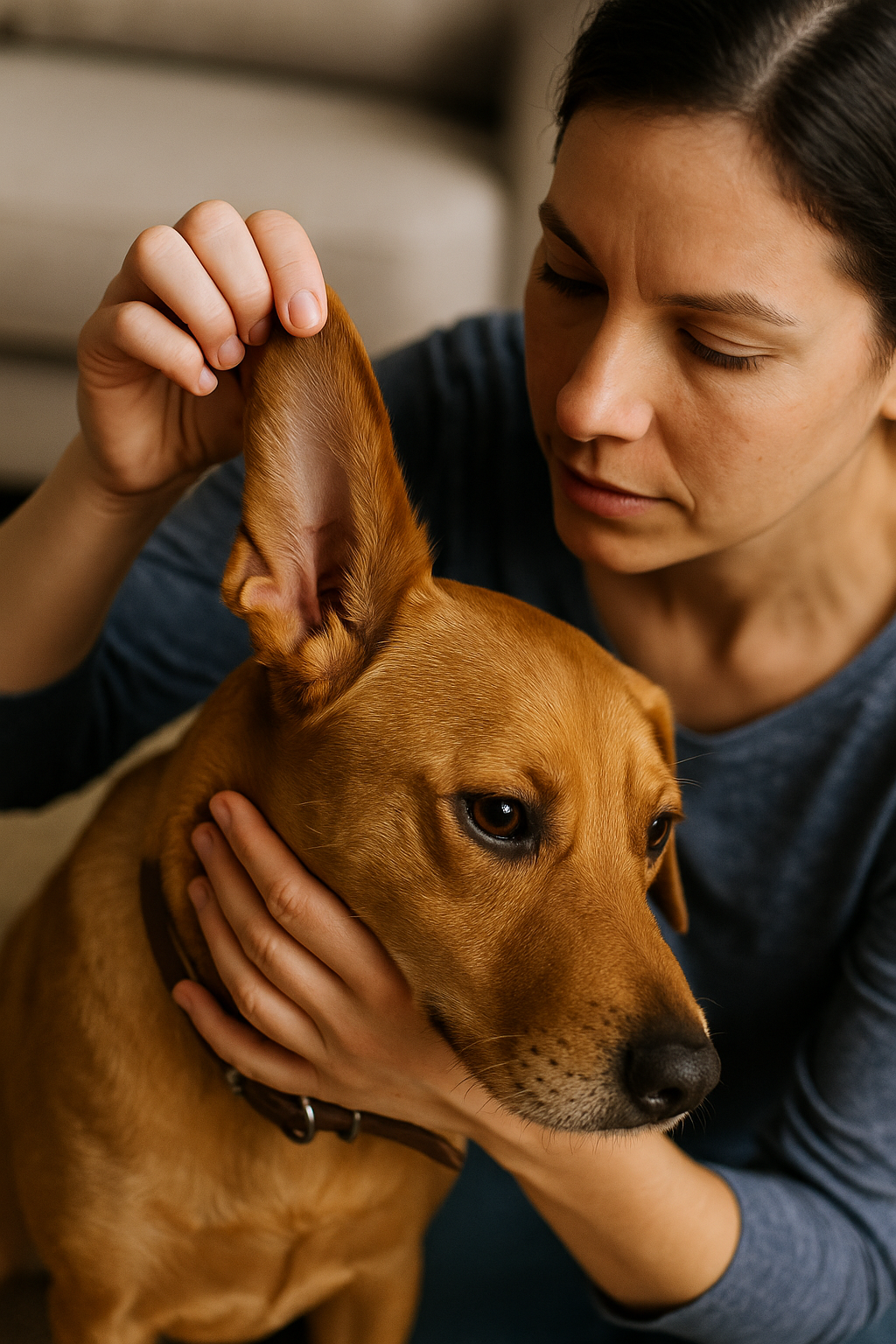
At-Home Skin Check (Pets): 5-Minute Monthly Checklist
Keeping an eye on your pet’s skin takes just a few minutes and can catch problems early—before they turn into vet-level emergencies. Below is a quick, step-by-step routine you can do once a month (or weekly during allergy season). It focuses on five “hot spots” where dogs and cats most often develop trouble: ears, armpits, groin, tail base, and between toes. There’s also a link to a 1-page printable checklist you can tape inside your grooming kit.
Why these Areas?
Moisture, friction, and tucked-away folds make these spots magnets for irritation, yeast/bacterial overgrowth, parasites (fleas/ticks/mites), and allergic flares. A monthly scan helps you notice small changes—redness, odor, discharge, hair loss—before they snowball.
The 5-Minute Check (what to look for)
1) Ears (outer flap & canal opening)
Look for calm pink/tan skin (not angry red), no scabs/crusts.
No brown/black discharge or strong, yeasty odor.
Your pet should tolerate gentle touch without head-shaking or pain.
If you see discharge, bad odor, or your pet resists touch: schedule a vet visit—ear infections worsen quickly.
2) Armpits
These chafe under harnesses/clothing. Check for rash, hives, bumps, or “hot spots.”
Make sure the coat isn’t matted and the skin is dry (not damp).
3) Groin & lower belly
Scan for spreading redness, pimples/pustules, ring-shaped patches, or “peppery” black specks (flea dirt).
No swelling, discharge, or foul odor around genitals; run a quick fingertip check along the mammary line for new lumps.
4) Tail base
Fleas love to congregate here. Part the coat and look for fast movers or flea dirt.
Watch for hair loss, greasiness, thick scaling, or “stud tail” changes (Watch for more on stud tail in another post).
5) Between toes & paw pads
Separate each toe. Look for redness, brown staining (saliva from licking), moist cracks, or oozing.
Pads should be smooth (no deep fissures). Nails shouldn’t be overgrown/ingrown. Remove burrs/grass awns if you see them.
Quick whole-body sweep (bonus minute)
Part the coat in 3–5 spots (neck, shoulders, flanks, rump) to view the skin.
Comb or run fingertips to feel for scabs, mats, ticks, or new lumps/bumps.
Red flags—call your vet promptly if you notice:
Open sores, bleeding, or rapidly spreading redness.
Strong ear odor/discharge, persistent head-shaking, or a tilted head.
Sudden hair loss, intense scratching, or swelling/ooze between toes.
Any lump that grows/changes quickly.
Skin changes plus fever, lethargy, or poor appetite.
Pro tips for quick, stress-free checks
Light + treat = win. Use your phone flashlight and reward throughout.
After bath or walk. Damp paws/ears reveal issues sooner; checks are easier when your pet is relaxed.
Photolog. Snap a quick photo of anything “new.” Changes over time are what matter.
Schedule it. Add a recurring calendar reminder (e.g., first Sunday each month).
Grooming fit check. Look under collars, harness straps, and clothing for chafing lines.
What’s normal vs. not?
Normal: soft skin, pale pink/tan, minimal odor, pet unbothered by gentle handling.
Not normal: angry red, sticky/black discharge, strong odor, moist or crusty patches, pain on touch, frantic licking/chewing, visible parasites.
This article and checklist are educational and not a substitute for veterinary diagnosis or treatment. If you’re unsure about anything you find, it’s always okay to call your vet.
Want a printable checklist? Download it here.
